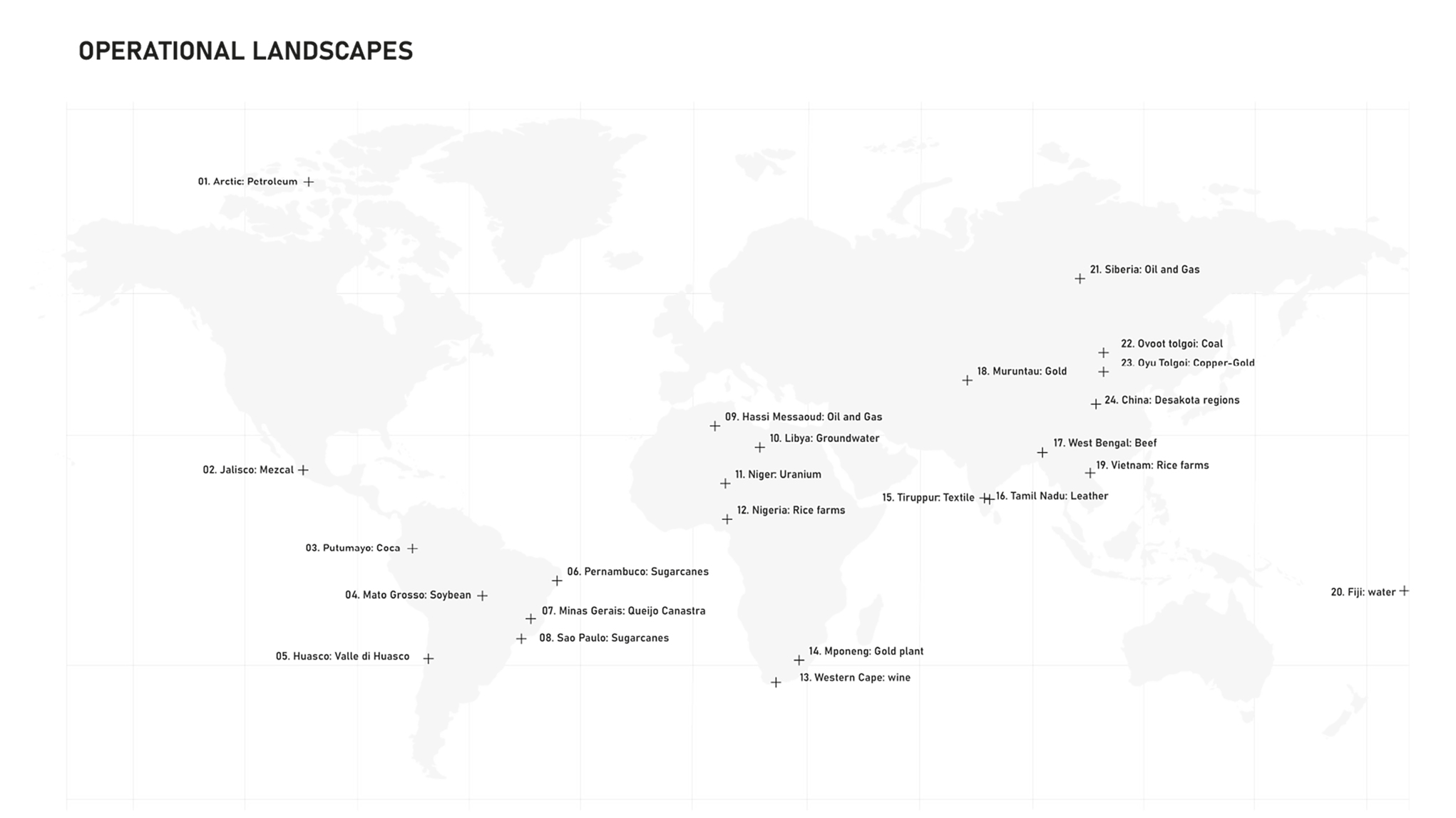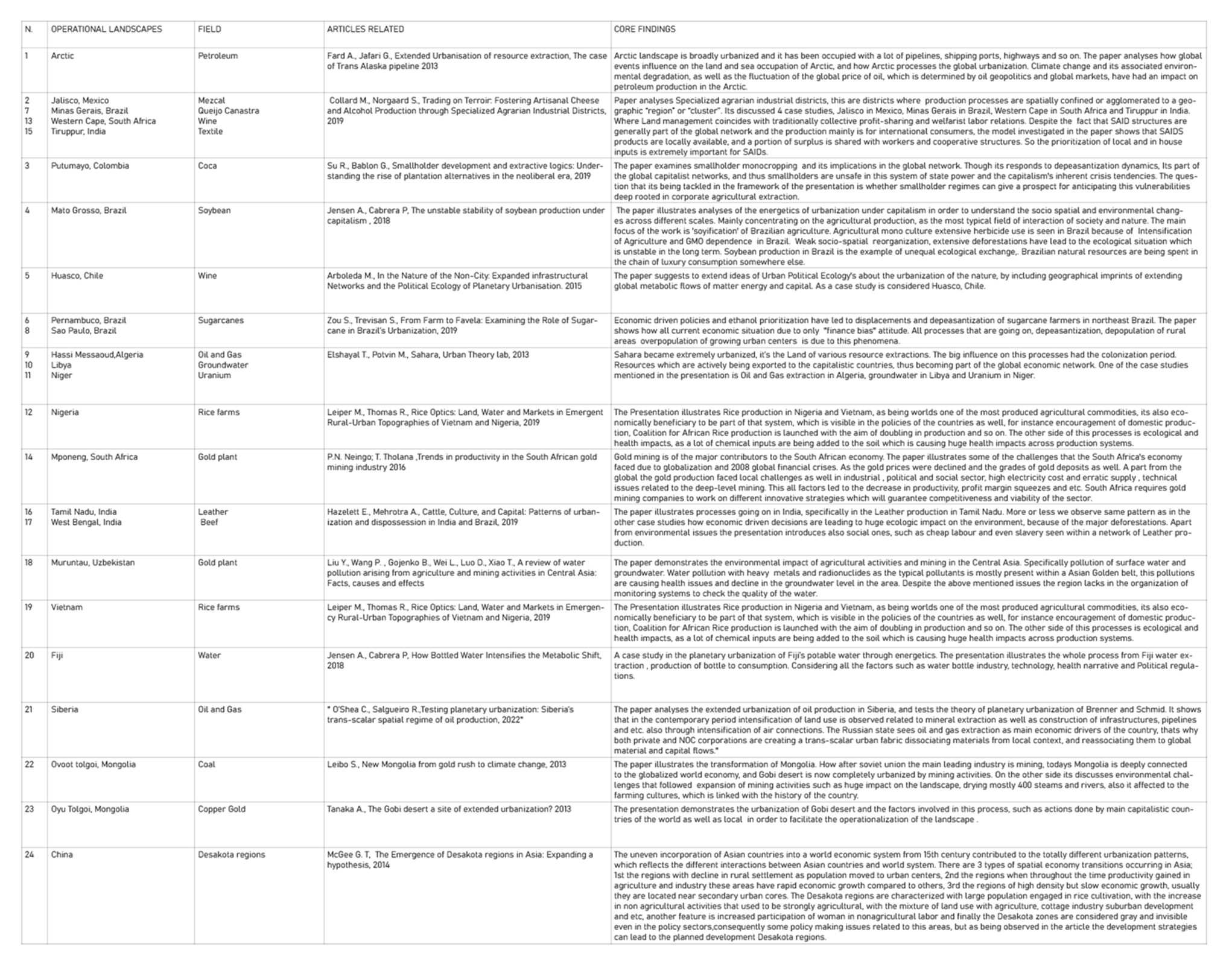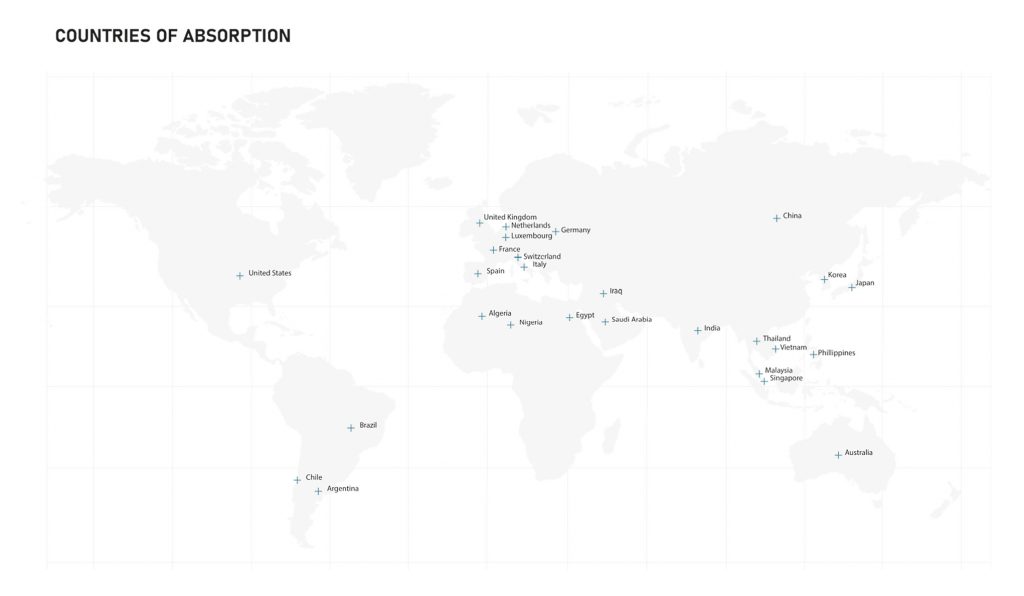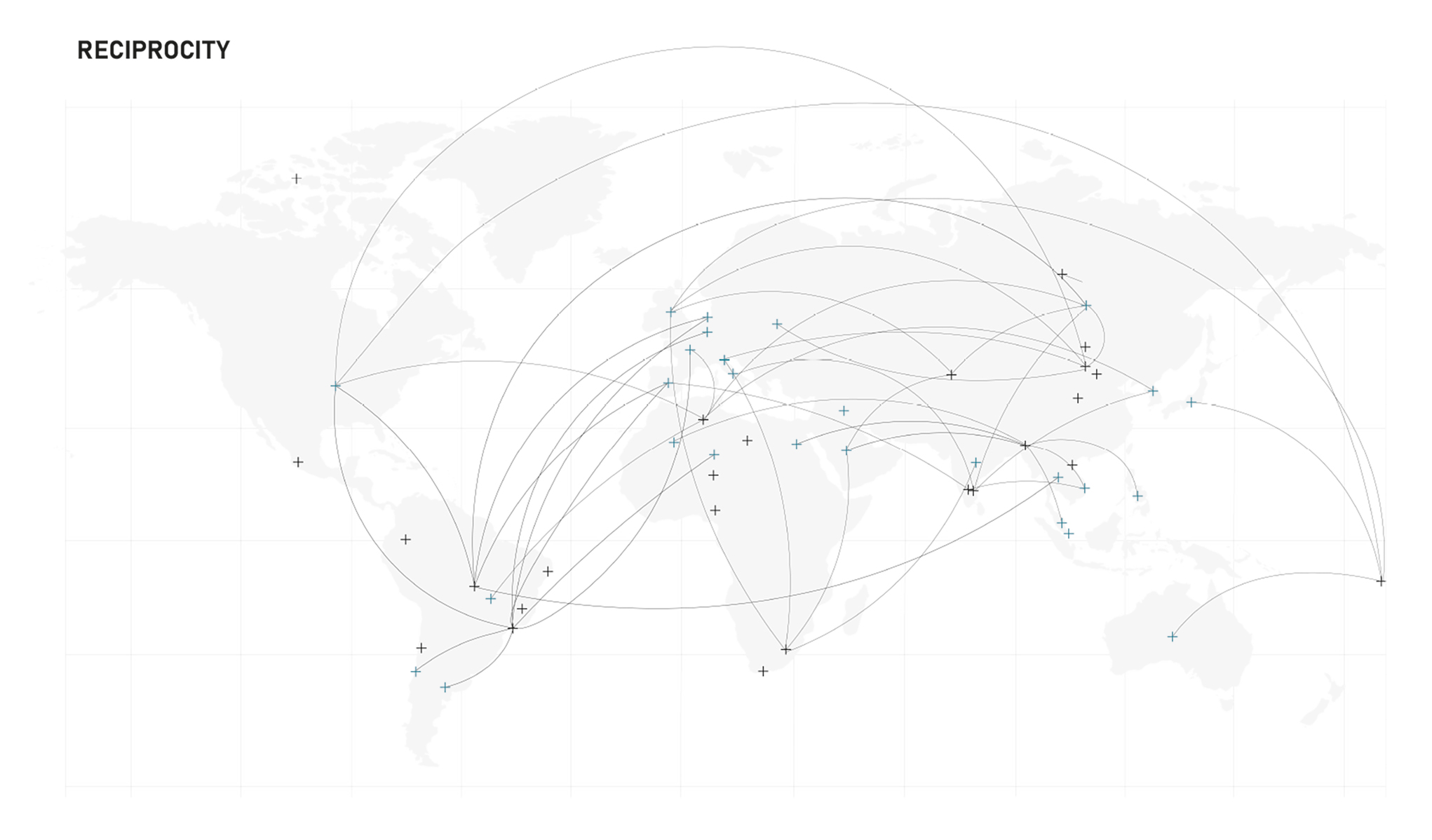Operational landscapes worldwide
Productions and absorptions
From the ongoing MSc thesis work Mapping Armenian Hinterlands by Meri Pepanyan.
A.Y. 2022-23
MSc in Architecture and Urban Design, School of Architecture Urban Planning Construction Engineering, Politecnico di Milano.
Supervisor: Simonetta Armondi

“In recent decades, the field of urban studies has neglected the question of the hinterland: the city’s complex, changing relations to the diverse non- city landscapes that support urban life […]. What role do spaces beyond the city play in urbanisation, and how are they transformed through this process? City-building is a process of sociospatial concentration, but its preconditions and consequences are not confined to the city’s immediate environs.The term ‘hinterland’ is used here to demarcate the variegated non-city spaces that are swept into the maelstrom of urbanisation, whether as supply zones, impact zones, sacrifice zones, logistics corridors or otherwise. Such spaces include diverse types of settlements (towns, villages, hamlets), land-use configurations (industrial, agrarian, extractive, energetic, logistical) and ecologies (terrestrial, oceanic, subterranean, atmospheric).” (Brenner & Katsikis, 2020, p.24)

Synopsis of the main operational landscapes worldwide. Elaboration by the author

Countries of absorption, i.e. Countries which import the products extracted from the operational landscapes. Re-elaboration by the author from urbantheorylab.net and articles mentioned in the chart above

Reciprocity: exports from operational landscapes (black) to countries of absorption (blue). Re-elaboration by the author from urbantheorylab.net and articles mentioned in the chart above

